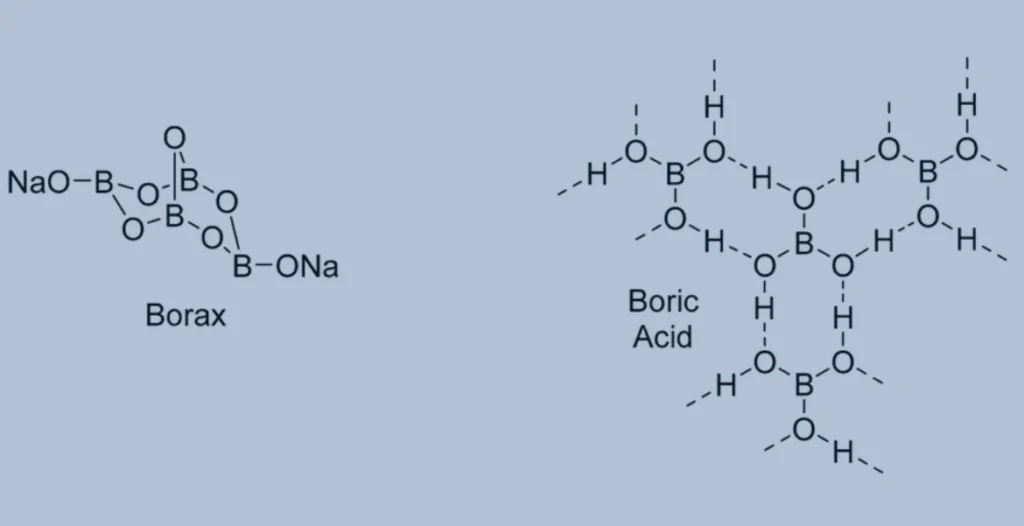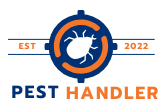Contents Guide
- 1 What is Boric Acid?
- 2 How Boric Acid Works as a Pest Control Agent?
- 3 Which Pests Does Boric Acid Target?
- 4 Methods of Using Boric Acid for Pest Control
- 5 Boric Acid vs Borax for Pest Control
- 6 Combining Boric Acid with Other Pest Control Methods
- 7 Long-Term Effectiveness of Boric Acid for Pest Management
- 8 Safety Precautions and Best Practices
- 9 Limitations of Boric Acid
- 10 Conclusion
- 11 FAQs
Pest control is an essential aspect of maintaining a clean and healthy living or working space. Among the variety of pest control methods, boric acid stands out as a highly effective and eco-friendly solution. It has been used for centuries, dating back to ancient Egypt, where it was employed for its antiseptic and insecticidal properties.
Today, it remains a preferred choice for homeowners and businesses alike, offering a natural, non-toxic alternative to commercial chemical pesticides. Unlike many synthetic chemicals, boric acid targets pests like ants, cockroaches, termites, and fleas without posing significant risks to humans or pets when used properly. In this article, we’ll explore how to safely and effectively use boric acid for pest control, highlighting its benefits and the best methods for application.
What is Boric Acid?
Boric acid is a naturally occurring compound derived from boron, an element found in the Earth’s crust. It is often used in various industries, from cosmetics to cleaning, but it has become especially popular as a pesticide due to its low toxicity to humans and animals when used correctly. In its powdered form, boric acid can target specific pests while leaving minimal environmental impact.
How Boric Acid Works as a Pest Control Agent?
Boric acid works by dehydrating and poisoning pests. When insects such as ants, cockroaches, termites, and fleas come into contact with boric acid, they ingest it or carry it back to their nests. Boric acid damages the pests’ digestive systems, causing them to dehydrate and eventually die. This slow-action method ensures that pests that feed on the boric acid spread it to others in the colony, amplifying its effectiveness.
Which Pests Does Boric Acid Target?
Boric acid is highly effective in controlling various types of pests, such as:
- Ants: It is particularly useful for ant colonies.
- Cockroaches: Boric acid can kill cockroaches by damaging their digestive systems.
- Termites: It acts as a repellent and can also kill termites.
- Fleas: Boric acid works by dehydrating fleas, making it an excellent option for flea control.
Methods of Using Boric Acid for Pest Control
Bait Creation
One of the most common ways to use boric acid for pest control is to create baits. This method is especially effective for ants and cockroaches. To create a bait, simply mix boric acid with a sweet substance like sugar or honey. The sugar attracts the pests, while the boric acid kills them. Place the bait in areas where you have seen pest activity, such as near ant trails, behind appliances, or in dark corners.
Dusting
Another effective way to use boric acid is by dusting it in areas where pests hide. This could include cracks, crevices, and behind appliances like refrigerators, stoves, and dishwashers. The powder sticks to the pests’ bodies as they move through these areas. When they clean themselves, they ingest the boric acid, leading to their eventual demise. This is an example of physical pest control.
Combination with Other Agents
For enhanced effectiveness, boric acid can be combined with other natural pest control ingredients. For example, mixing boric acid with D-Limonene, a natural extract from citrus peels, can make it more potent, especially against cockroaches. D-Limonene disrupts the pests’ ability to breathe, while boric acid takes care of their internal systems. This combination is highly effective when used in targeted areas.
Boric Acid vs Borax for Pest Control
Boric acid and borax are often used interchangeably, but there are key differences between the two. Boric acid is more acidic and is primarily used for killing pests, while borax is a less acidic compound and is often used as a detergent. Boric acid is generally more effective for pest control due to its toxicity to insects. However, both can be used as insecticides with similar effectiveness.

Combining Boric Acid with Other Pest Control Methods
While boric acid is an effective pest control solution, it can be even more powerful when combined with other pest control methods. For instance, sealing cracks, gaps, and entry points in your home prevents pests from re-entering after treatment. Additionally, eliminating food and water sources deprives pests of what they need to survive, enhancing the impact of boric acid.
Using a combination of physical barriers, sanitation practices, and boric acid can provide a holistic approach, ensuring that pest problems are effectively minimized and controlled over time. This integrated pest management approach increases the likelihood of long-lasting results.
Long-Term Effectiveness of Boric Acid for Pest Management
Boric acid offers long-term relief from pest infestations, but its effectiveness is influenced by the pest type and environment. While it can be highly effective against ants and cockroaches, repeated applications may be necessary to fully eliminate these pests.
For pests like fleas, additional steps, such as frequent vacuuming and washing pet bedding, are essential for comprehensive control. Regular reapplication of boric acid helps maintain its potency and ensures that pest problems don’t return. A combination of diligence, proper treatment, and maintenance is key to keeping your environment pest-free in the long run.
Safety Precautions and Best Practices
Recommended Application Rates and Safety Guidelines
While boric acid is considered safer than many chemical pest control methods, it is still important to follow application guidelines. Always use the product in recommended amounts to avoid overexposure. It is best to apply it in thin layers rather than large piles, as the latter can make it less effective and increase the likelihood of accidental exposure.
Avoiding Application on Food Preparation Surfaces
Boric acid should never be applied directly to food preparation areas. While it is safe to use in other places around the home, such as behind appliances or along baseboards, care should be taken to ensure it does not come into direct contact with food. If accidental contact occurs, thoroughly clean the area before using it again.
Safety for Pets and Children
Although boric acid is generally safe when used correctly, it is essential to keep it out of reach of pets and young children. Pets may ingest boric acid if they come into contact with it, and while the risks are minimal, it’s better to be cautious. Make sure to apply boric acid in areas that are not easily accessible to pets and children.
Limitations of Boric Acid
Boric acid’s effectiveness is greatest in areas where it remains undisturbed. For example, if you apply it to cracks and crevices, it will be effective as long as those areas aren’t cleaned or disturbed too often. In high-traffic areas, the powder may get wiped away before it has a chance to work. This limitation means that boric acid should be used in conjunction with exclusion methods, such as sealing entry points.
Boric acid is effective at killing adult cockroaches, but it does not penetrate eggs. Therefore, to fully eliminate a cockroach infestation, additional steps, such as using an insect growth regulator (IGR), may be necessary to disrupt the development of the eggs.
Conclusion
Boric acid is a powerful, natural solution for pest control. Whether you’re dealing with ants, cockroaches, or fleas, boric acid provides an eco-friendly, low-toxicity option to keep your home pest-free. While it has its limitations, its combination of effectiveness, affordability, and safety makes it a valuable tool in any pest management strategy.
FAQs
Boric acid is safe when used correctly, but pets should not come into direct contact with it. Apply it in areas that are inaccessible to pets to minimize risks.
Boric acid works gradually, and it may take a few days or weeks to completely eliminate pests, depending on the infestation size.
Yes, boric acid can be used for outdoor pest control, particularly for ants and cockroaches. Just make sure to apply it in shaded, protected areas.
Yes, boric acid can be mixed with sweet substances to create effective baits, or with essential oils like D-Limonene for enhanced results.
Reapply boric acid as needed, especially in high-traffic areas where it may be disturbed or wiped away. Regular reapplication ensures ongoing pest control.



 Pest Control Solutions
Pest Control Solutions